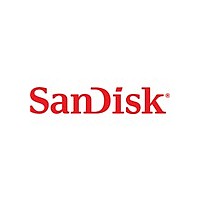SDMJ-32 SanDisk, SDMJ-32 Datasheet - Page 10

SDMJ-32
Manufacturer Part Number
SDMJ-32
Description
Manufacturer
SanDisk
Type
MultiMedia Cardr
Datasheet
1.SDMJ-32.pdf
(91 pages)
Specifications of SDMJ-32
Density
32MByte
Operating Supply Voltage (typ)
3.3V
Operating Temperature (min)
-25C
Operating Temperature (max)
85C
Package Type
MMC
Mounting
Socket
Pin Count
7
Operating Temperature Classification
Commercial
Operating Supply Voltage (min)
2.7V
Operating Supply Voltage (max)
3.6V
Programmable
Yes
Lead Free Status / RoHS Status
Compliant
Revision 1.3
© 2005 SanDisk Corporation
1.12.10 Copy Bit
1.12.11 CSD Register
1.12.8
1.12.9
Erase
Write Protection
The smallest erasable unit in the MultiMediaCard/RS-MultiMediaCard is a sector. In order
to speed up the erase procedure, multiple sectors can be erased at the same time. The erase
operation is divided into two stages as shown in Table 1-3.
Table 1-3
Two-card level write-protection options are available: permanent and temporary. Both can
be set using the PROGRAM_CSD command (refer to CSD Programming, Section 4.2.3).
The permanent write protect bit, once set, cannot be cleared. This feature is implemented in
the MultiMediaCard /RS-MultiMediaCard controller firmware and not with a physical OTP
cell.
MultiMediaCard/RS-MultiMediaCard content can be marked as an original or a copy using
the copy bit. The copy bit of the card is programmed as a copy when testing and
formatting are performed during manufacturing. When set, the copy bit in the CSD
Register is a copy and cannot be cleared.
The card is available with the copy bit set or cleared. The bit set indicates that the card is a
master. This feature is implemented in the card’s controller firmware and not with a
physical OTP cell.
All MultiMediaCard/RS-MultiMediaCard configuration information is stored in the CSD
register. The MSB bytes of the register contain manufacturer data and the two least
significant bytes contain the host-controlled data: the card copy/write protection, the user
file format indication and ECC Register.
The host can read the CSD Register and alter the host-controlled data bytes using the
SEND_CSD and PROGRAM_CSD commands.
Stage
1
2
Tagging
Erasing
Name
Erase Operation Stages
Selecting the Sectors for Erasing . To facilitate selection, a first
command with the starting address is followed by a second command
with the final address, and all sectors within this range will be selected
for erase.
Starting the Erase Process . The sectors are grouped into erase
groups of 16 or 32 sectors. Tagging can address sectors or erase
groups. Either an arbitrary set of sectors within a single erase group, or
an arbitrary selection of erase groups may be erased at one time, but
not both together. That is, the unit of measure for determining an erase
is either a sector or an erase group. If sectors are tagged, then all
selected sectors must lie within the same erase group. Tagging and
erasing sectors must follow a strict command sequence.
1-8
MultiMediaCard/RS-MultiMediaCard Product Manual
Description
Chapter 1 – Introduction
03/22/05












